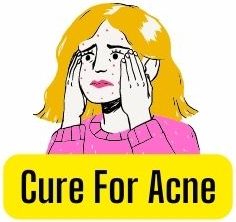
You may have been wondering what causes acne on forehead and temples. If you have a blemish-prone face, facial mapping can help you identify what is causing acne. The causes of acne on this area include Sebum, Bacteria, and Dead skin cells. Follow this guide to learn more about these factors and their relationship to acne. After reading this article, you will be well on your way to clearing your complexion and avoiding acne!
Face mapping can help pinpoint the cause of acne on forehead and temples
Face mapping is a diagnostic technique that uses facial photos to identify the causes of acne. Using these photos, a dermatologist can pinpoint the cause of breakouts by looking at their face and taking measurements. Acne on the forehead and temples often has the same cause, so face mapping can help find the cause. If breakouts don’t clear up after a couple of weeks, it may be a sign of an underlying condition.
The theory behind face mapping is that certain facial skin areas correspond to specific internal organs. This means that the area in which acne appears on the face may be indicative of an organ or gland that is unhealthy or imbalanced. The ancients used this information to diagnose diseases. Today, we have better technology to identify the causes of acne and its symptoms. Face mapping is becoming more popular and can help people find the best treatment for their condition.
The face mapping process incorporates the concept of life force energy, or qi. This vital energy flows through the body’s channels. When this vital energy is disturbed, it manifests as acne, inflammation, and other skin problems. If this is the case, it’s time to seek treatment. Face mapping can help you find the cause of acne on forehead and temples by using your own body memory.
Some experts believe that the location of acne on the forehead and temples corresponds with certain organs. Similarly, acne on the cheeks could be caused by clogged pores or excessive oil production. By eliminating these factors, you can help clear your skin and prevent breakouts. The next step is identifying the root cause. To get rid of acne on forehead and temples, you must first eliminate the cause.
Sebum
Acne on your forehead and temples is most often caused by a buildup of sebum, a naturally occurring oil produced by your skin. This oil is produced by tiny oil glands and enters the surface of the skin through tiny holes known as pores. When your pores become clogged, bacteria grow within them and cause swollen bumps called pimples. Because your skin produces more sebum than normal, your forehead and temples are common places to see breakouts at the beginning of a breakout.
Many people suffer from acne in different areas of their face, but there is no specific reason why your forehead and temples should be affected. While clogged pores can lead to acne anywhere on your face, the majority of people with acne experience some form of blemishes on their forehead. Because the forehead is one of the first parts of the face to develop acne, it often clears up quickly as adolescence advances.
Aside from being dehydrated, a primary cause of acne on your forehead and temples is the use of hair care products. These products can clog your pores and cause acne. So, if you notice that you have acne on your temples after changing your haircare product, try to recall if you recently switched to an oil-free one. This should solve the problem. Otherwise, you can go back to using the same products as before, but make sure you replace the oily ones with oil-free products.
Other factors that can lead to breakouts on your forehead and temples are poor diet and poor digestion. You should avoid eating junk food, sugary drinks and using hats as this can trap sweat and cause an outbreak. Sebum also serves as a fertile environment for acne-causing bacteria. These factors have to be addressed so that you can stop acne and restore your confidence. There are many ways to clear up your acne and keep your temples beautiful.
Dead skin cells
Acne on the forehead and temples has a similar pathogenesis to facial acne. These areas are prone to breakouts because of the clogged pores caused by dead skin cells and excess oil. Using oil-regulating cleansers or scrubbing your face frequently can exacerbate the problem. In addition, the area is prone to frequent touching, which can spread bacteria. However, if you use the right products to get rid of acne on your temples and forehead, you’ll have clearer skin in no time!
Headwear is another major cause of acne on the forehead and temples. These items can get sweaty and dirty, rubbing the skin against the temples and creating the perfect environment for acne-causing bacteria. Another reason for stubborn acne on the temples is hair styling products. Many of these products contain comedogenic oils, which clog pores. To avoid this, look for products that do not contain these ingredients.
While some people suffer from acne on the forehead and temples, many people do not know why they get them. In some cases, the problem can be caused by a hormonal imbalance or a hormone imbalance. A doctor might recommend the use of a moisturizer to get rid of the problem. While this treatment method will not completely cure acne, it can make it less painful. Even worse, acne on the forehead and temples is often a sign of an underlying health problem.
In addition to avoiding the use of hair styling products, many people also wear headwear during a breakout. Also, if you do use hair gel, make sure to wash out the gel before bed. Changing pillowcases every three days is also a good idea. This will remove any leftover pomade and bacteria. And remember to always wear a clean towel. It is much easier than you think to prevent acne on your temples and forehead by washing your head regularly.
Bacteria
You may be wondering how bacteria cause acne on the forehead and temples. You’re not alone. Many people suffer from acne every day, with some experiencing a regular bout of deep cystic acne. Acne can also be regional in nature, with the forehead being a particularly common spot. To avoid this, you should understand the causes and symptoms of acne on the forehead and temples. Board-certified dermatologist Dr. Purvisha Patel explains.
Headwear can be another culprit. Sweat and headwear can clog the pores on your temples. This can promote the growth of acne-causing bacteria. Avoid wearing headwear in hot weather and wear a hat or visor during warm weather. Headwear can also trap sweat against the face, causing irritation. It’s also important to use hair products labeled with the ingredients you need to keep your skin clean. Some of these products contain comedogenic oils that can clog pores and cause acne. Make sure to look for products with no comedogenic oils, as these are the most common cause of acne on the temples and forehead.
When acne is caused by bacteria, the pores on your temples and forehead become clogged. This oil can produce a pore-clogging bacteria. To prevent this, you should always wash your headgear frequently with a mild cleanser and a good anti-acne product. If you have acne on your forehead, it’s important to follow a daily acne treatment regimen that contains both medicated and non-prescription ingredients.
Besides bacteria, fungi can also cause breakouts on the forehead and temples. Yeast can be trapped in pores along the hairline and cause acne. Yeast is more likely to cause acne than bacteria, but you won’t be able to see it until it reaches your temples. Bacteria can also cause breakouts if you use the wrong shampoo or skincare products. Hair gels and spray contain ingredients that clog the pores and cause acne on your forehead and temples.
Stress
If you’ve been experiencing breakouts on your forehead and temples, you’re probably not alone. Many people have acne around these areas due to hormonal changes. While changing your skincare routine can help with this problem, a dermatologist may be able to help you get rid of acne quickly. If your acne is severe and preventing it from returning is a priority, your dermatologist can prescribe treatments that are safe for your skin type and that will help it heal faster.
The causes of acne on the forehead and temples are generally the same as those in acne on the rest of the face, with a few exceptions. Stress is a common cause of this type of breakouts. The most common hormone that contributes to acne is testosterone, and it can alter the production of sebum, leading to extremely inflamed blemishes. Stress can also cause dehydration and constipation, two conditions that are closely related to acne.
A study from Stanford University found that college students were more likely to have acne flare-ups around exam time. College students also reported higher levels of stress during exam time. Researchers didn’t determine how stress exacerbates acne, but they do know that sebum cells in the face contain receptors for stress hormones. When these receptors get activated, they produce more sebum, which clogs hair follicles.
There are a variety of other factors that contribute to acne on the forehead and temples. Hormone levels, particularly cortisol and androgens, play a role. When levels of these hormones are high, the immune system responds by triggering a flare-up. Stress-related acne can be exacerbated by acne medications. Managing stress can reduce the risk and severity of acne.





